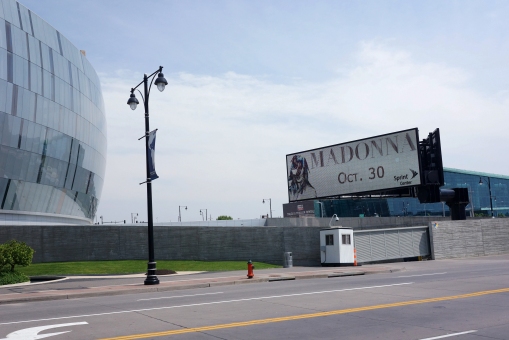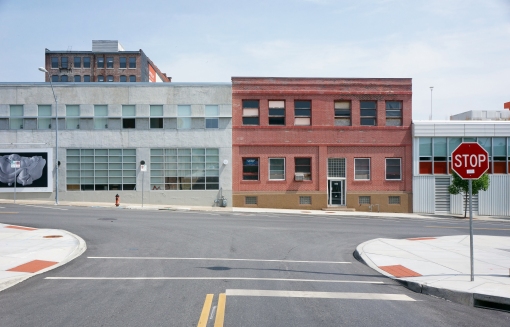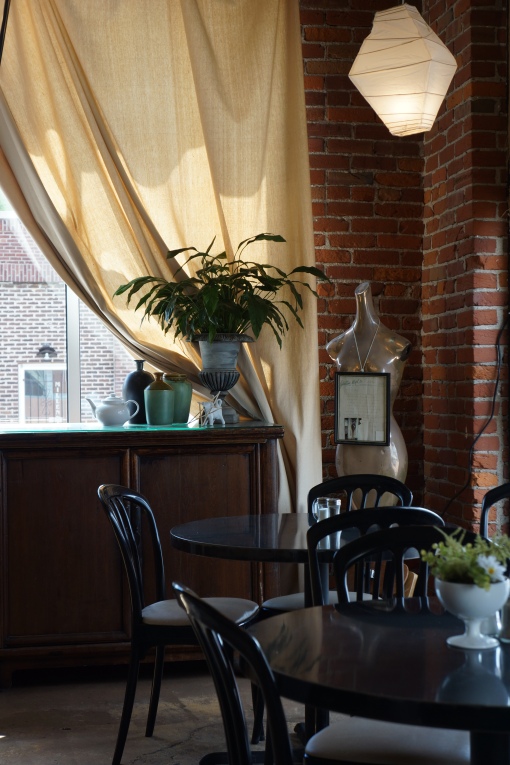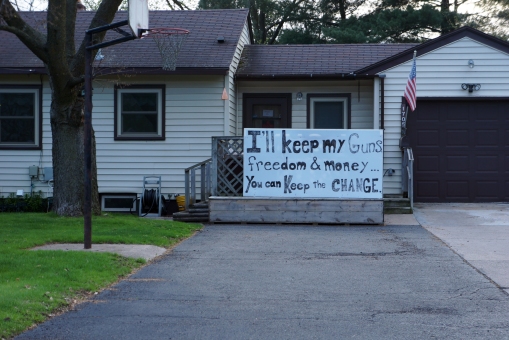Upcoming at the North West Film Center will be two nights of screenings of my films, and, if we get 10 participants, a workshop. Here’s the schedule:
NWFC, Whitsell Auditorium, 1219 SW Park Avenue, Portland, Oregon
May 317:00 PM Last Chants for a Slow Dance
9:00 PM Parable
Workshop June 1-2 (To register call 503-221-1156)
June 3
6:30 PM La Lunga Ombra (Italian with English subtitles)
8:15 PM Imagens de uma cidade perdida (minimal Portuguese with English subtitles)
 Last Chants for a Slow Dance (1977)
Last Chants for a Slow Dance (1977)
Last Chants was made in 1977, for $3000, in and around Missoula, Montana. It swiftly went to many film festivals at the time (Edinburgh, Toronto) and gained a strong reputation as a real “American Independent” film. It’s listed now in the book 1000 Films You Must See Before You Die, and I get DVD orders from around the world thanks to that. J Rosenbaum also lists it in his 100 Best Films Ever. Here’s a review:
From the Chicago Reader by Jonathan Rosenbaum
.
My own favorite among Jon Jost’s experimental narratives, this chilling portrait of an embittered, misogynistic lumpen proletarian (Tom Blair) driving through western Montana consists mainly of a series of virtuoso long takes. Jost’s highly original technique and Blair’s searing performance combine to create one of the most powerful and provocative psychological profiles of a motiveless killer to be found on film.(For much more from Rosenbaum see this or for a UK view see this.)
Parable was made in Nebraska, just as the Bush era was coming to a formal close. It was done without a script, and as I told the actors, I didn’t want to know what I was doing, I wanted to dive into my psyche and see what came up. It’s a sour film, but beautiful and weird and disturbing – the kind of film I want to make. Here’s a review from Portland critic, Dennis Grunes:
PARABLE (Jon Jost, 2009)
Jon Jost’s films have always tended toward parable. Now this is the case again with Parable, the jewel of his Fuck Bush (He Fucked Us) Trilogy. (This overarching title is mine.) Homecoming (2003) homed in on the aftermath of a returning dead soldier; Over Here (2007), of a returning living soldier. Now Jost turns to the Bush-Cheney & Co. assault on individual rights and freedom, its devastation of these, and the linkage between this war at home, on the American citizenry, with the illusory nature of American hopes and promises predating Bush 43. Jost’s parable is a perfect one: crystal-clear, yet elusive, mysterious, irreducible, unfathomable. It was videographed in Lincoln, Nebraska, in, as Jost puts it, “the Time of Bush.”
Like his Last Chants for a Slow Dance (1977), one of whose violent aspects it brilliantly revives, the film proceeds by set-pieces, some of which are fashioned from Nature outdoors. A long one has two men supposedly in the front seat of a car, the supposed road rapidly visible in retreat through the back window. In reality the scene is artificial; facing us, the men’s images are scrunched and thinly outlined in black. Jim, who has just abandoned his wife, is driving the other man’s car. (The owner/passenger’s license has been suspended for drunk driving.) As country-western music plays on the radio, Jim extols the virtue of American freedom, identifying with it the road of possibilities before them. But this road is excluded from the frame; and even if were it visible, it would not be real, but illusory. The men themselves are reduced by the comic strip captions that reveal what they are thinking, each about the other and in response to what the other is saying. While Jim loved going to church as a boy, the owner/passenger did not. With sore irony this disparity binds them as they both end up singing the hymn “I’m in the Lord’s Army.” Jim, sentimentally, still is; his companion “ain’t marchin’ anymore.” Recall Tennyson’s poem “The Two Voices”? Could not these two chaps represent competing aspects of a single personality?
After Jim anally rapes and then shoots his companion in the brain point-blank, two other characters appear in the country. Their relationship, that of master/owner and slave, reminds one of Roman Polanski’s great The Fat and the Lean (1961). The androgynous slave–mime Rachael Le Valley gives a haunting performance–has his/her ankle bound by rope. (Sometimes an upper torso shot makes the slave-in-motion seem perfectly free; but he/she isn’t.) Updating the myth of Sisyphus, the owner is continually (though not continuously) unraveling a vast, serpentine pile of rope. When he is shown first engaged in this activity, we cannot see the rope; what we see is his upper body rhythmically “at it,” his screen-right shoulder undulating in and out of sunlight. In a later, parallel scene, the owner, indoors, appears to be having sex with someone whose moans we hear but who isn’t included in the frame. No; the owner is once again unraveling rope, while the moans emanate from the slave, who is masturbating in his/her space of confinement outdoors. The poor slave pays a terrible price for getting the owner all hot and bothered. We hear the sound of a cleaver as it is being sharpened in the bathroom as the slave stands upright in the tub.
A recurrent visual refrain is the owner’s eye through a peep-hole, looking in on the slave. The surveillance is creepy and frightening–but also, somehow, sad. I was reminded of Redon’s Cyclops. (At one point the owner at work at his pile of rope is shot through a tight-meshed screen, making him also appear to be a prisoner.) Another recurrent visual refrain is a tree or trees luminously alive in a breeze. This symbol of freedom in certain contexts ironically reflects on the lack of freedom that humans experience.
Jim eventually reappears and comes to a bad end. (The slave’s.)
Jost’s film concludes with a postscript indicting Bush and Cheney and other members of their administration. The collision between the preceding poetic parable and this straight shot of prose generates tremendous feeling.
An American masterpiece.
 La Lunga Ombra (The Long Shadow)(2006)
La Lunga Ombra (The Long Shadow)(2006)
La Lunga Ombra was shot in Italy in a week or so, with a few modest “name” actresses and a retired model. Totally improvised, it was my take on how 9/11 had impacted a certain class of intellectuals in Italy, and more broadly in Europe. It cost me about $50 to make, thanks to the actresses footing the bill for my food. Here’s a review by web cinema critic Acquarello.
On the surface, Jon Jost’s austere, somber, and uncompromisingly caustic improvisational rumination on the pall cast by the aftermath of 9/11 on the European consciousness, La Lunga Ombra seems an uncharacteristic departure from the intractable consciousness of middle America that pervade his early films – a post tragedy portrait that converges more towards claustrophobic, Bergmanesque angst rather than the transformative, post-apocalyptic, loss of innocence grief that its conceptual framework would seem to suggest. Loosely structured around the lives and mundane gestures of a trio of close knit friends – a literary figure (Eliana Miglio) (whose agency appears to be in the process of publishing a photo-essay journal on the faces of colonial-era terrorism) and a television producer (Simonetta Gianfelici) who retreat to a remote, off-season seaside cabin in order to tend to a mutual friend, Anna’s (Agnese Nano) emotional crisis and ensuing depression after being unexpectedly abandoned by her cruel (and perhaps abusive) husband – the film is also a provocative, broader exposition on the intangible, often corrosive collateral damage of psychological warfare and demoralization.
Intercutting the quotidian rituals of women in the stasis of their isolation (as they alternately attempt to console Anna by lending a sympathetic ear as she struggles to articulate her sense of loss, distracting her thoughts with idle conversation and whimsical parlor games, and encouraging her to reclaim her identity by returning to youthful pursuits) with textural and increasingly abstract archival footage from acts of terrorism, Jost reinforces an atmosphere of disjunction between characters and context that, in retrospect, perhaps reveals the underlying separation between action and consequence that pervades the film. A videotaped interview with a businessman recounting his experience while working in postwar Afghanistan alludes to this bifurcation when he describes his observation of the absence of everyday interaction between men and women in contemporary, post-Taliban Afghan society, a culturally enabled separation that leads to a certain level displaced intimacy not usually found in patriarchal cultures. Conversely, the friends’ hermetic retreat also becomes a form of artificial segregation – this time, from the community of men – where their interaction is relegated to the margins (represented only as distant photographs hanging from walls or leafed through in books (uncoincidentally, as symbols of warfare or violence), or existing in the periphery as fire wood vendors, technicians, or photographers). However, inasmuch as instinctual regression serves as a defense mechanism against inflicted wounds, it also exposes the myopia of victimization. In a sense, this defensive retreat towards isolation – and in particular, a self-imposed isolation in order to reinforce a sense of solidarity and foster moral support – not only illustrates the core of human nature’s response to trauma, but also introduces the idea of the women’s private turmoil as a microcosm of post 9/11 consciousness where grief, loss, fear, and confusion have invariably given way, not only to isolationism, self-righteousness, and intransigence, but more importantly, to a self-perpetuating moral contamination and spiritual inertia that continues to fester long after the crisis has subsided. Moreover, by incorporating granular and pixellated images from the World Trade Center attack that appear increasingly impressionistic and decontextualized (paradoxically creating an inverse proportionality between the distance to the image and its resolution), the juxtaposition becomes a potent metaphor for the abstraction inherent in the psychology of terrorism, where effectiveness is measured, not in conveying graphic realism or maximized casualty, but in the manipulation of public sentiment through the global domination of media images. It is this quest for sensationalism and media occupation that is ultimately encapsulated by the controversial inclusion of a gruesome and desensitizing ritual execution footage taken in postwar Iraq that concludes the film – a grim and sobering reminder of society’s own implication in the creation of the spectacle, in the systematic corruption of its own soul.
 Imagens de uma cidade perdida (2011)
Imagens de uma cidade perdida (2011)
Imagens is a meditative documentary, a kind of rumination on place and its time and spirit – the old parts of Lisbon, Portugal: Alfama, Graca, Castello. It was screened at the Rotterdam festival, and was in competition at the Yamagata documentary festival in Japan in October 2011. Here again is Dennis Grunes:
IMAGES OF A LOST CITY (Jon Jost, 2011)
“I think we are blind. Blind people who can see, but do not see.” ― José Saramago
Prolific Jon Jost’s videographed Imagens de uma cidade perdida, from Portugal and South Korea, now that I’ve seen it, replaces Lars von Trier’s Melancholia as my choice for the best “film” of 2011. Jost has written about “the Portuguese inclination towards fatalism and sadness,” their saudade. His portrait of modern Lisbon perhaps suggests this (although this would not have occurred to me had I not read Jost’s remark), but reflects as well its mirror-image, the sadness that derives from the gradual loss of everything to Time. Jost has dedicated Imagens to his young daughter, Clara. (For an explanation of the tragic situation involved, see my essay on his 2006 Passages.) Poetic and never poetical, it is a documentary that ferrets out glimpses of human and material disrepair. Only children at play and hands at work hammering pieces of stone into the sand to create an alley pathway—something for future feet—escape the pervasive tenor of loss, exhaustion, dilapidation. We witness people who are being, or feeling, left behind in a globalized city dropping from its historical and cultural stature into the Third World.
.
Jost casts his camera behind and under places and structures, favoring peoples’ backs. (A mischievous boy, though, pops his face into the camera; we enjoy following his vivid shirt to the far back of the frame and again up front.) The framing divides and otherwise restricts exterior space. The opening static, long-held shot is behind a residential structure—a house, I think—and another, an apartment building, with an alley in between the two. Children play. On a bench, closer to us, her back towards us, a solitary older woman sits; at one point, the boy mockingly kisses her and is reprimanded, presumably by his mother. The woman sits and sits; is she observing, or simply staring into space? Is she as much remembering as living?—inside her head in the past, or in the moment? Eventually she is joined by a neighbor her age. They softly converse. What of life has slipped away from them? Both are nearly as stationary as the camera—so much so, in fact, that when the first woman, alone, reaches once to the ground, this motion of hers perplexes and unsettles..
Jost’s video passes between substantiality and abstraction; sometimes, abstract images are conjoined with clear, immediate sounds, or substantial images are conjoined with abstract sounds, the echo-y or distant sounds of seeming voices of the past. Images also pass between color and monochrome. An overhead long-shot, seemingly black-and-white, studies children at play in the street. They resemble the blind, groping, evolutionary beetles in Robert Browning’s poem “Two in the Campagna.” Individually some of them may have futures; but, visually, vertically, the group of them, however young, are imagined lost to Time. In time, most everything we see and hear in this “film” becomes a metaphor..
The governing one, because it evolves into a metaphor for the creative process that is generating Imagens, as well as a wider metaphor for the narrow, peripherally blind purposefulness of our laboring lives, shows masculine hands at work constructing the aforementioned pathway. The activity is “in the moment,” direct and immediate, except that the abstraction achieved by focusing only on hands almost feverishly busy amidst speechlessness and the alienating sound of hammer on stone, consigns it to something more elusive than a material dimension. Later, a dissolve restores the activity, now approaching completion, to our view. Both passages seem to be in black and white—until a glimpse of a worker’s blue jeans enters the frame: as quietly explosive a visual gesture as when the woman on the bench reached momentarily to the ground. Is it an illusion that the present seems capable of redeeming, however briefly, whatever has been lost to Time?.
For a long time, Imagens remains out of doors, in a way separating us, as well as the people themselves, from the stability of their lives. Eventually, the camera is indoors—for instance, at a window observing a municipal bus, as well as other traffic, outside. Darkness; covered with blinds, the window—or another window—is doubly mysterious. Jost applies distortion to create the illusion that the venetian blinds and window are undulating—breathing. It is a blind and labored—a mortal—breath. Sound, also, seems distant, ghostly. The occupants of the house or apartment, although it is their own struggle, are themselves blind to the struggle at the window..
Imagens de uma cidade perdida, outdoors again, closes on an older gentleman occupying a bench. The image startles for two reasons. This bench, on the street, isn’t shot from behind; we are given a lateral view. The solitary occupant, moreover, seems to be in the throes of anguish or terrible pain. Rather than sitting upright and facing forward, he is all over the bench, as though he were using it to hold himself together. We are seeing how he feels—for whatever cause. Jost doesn’t budge the camera, and we cannot help but see. Is it Portugal’s experience of fascism, which an earlier inserted passage addressed, what is weighing on this man? Is his health, like his city, in disrepair? We do not know, we will never know; but we cannot help but see..
Lisbon is a city that has never meant anything to me. Now it will haunt me for the rest of my life.















































